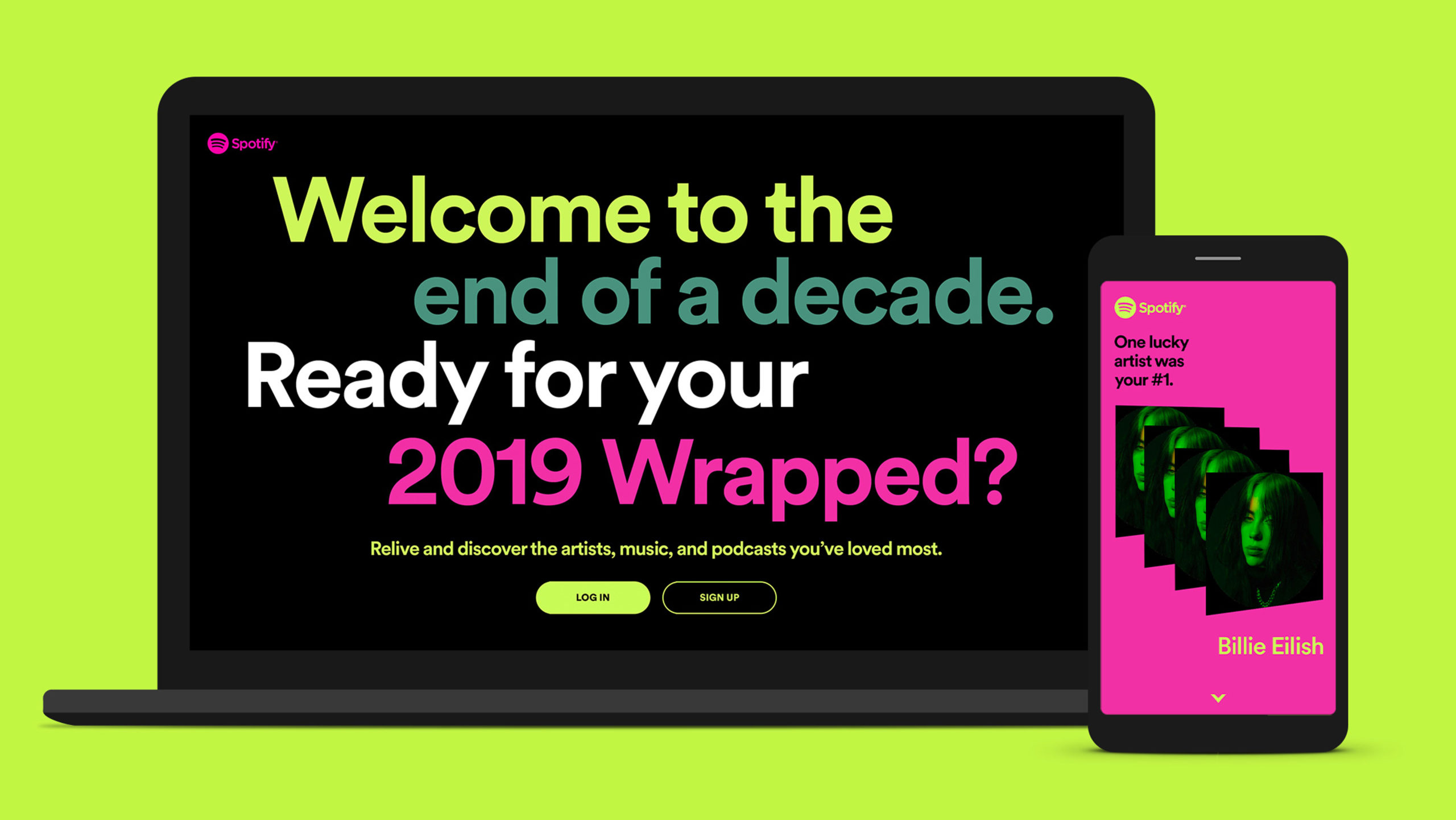The idea of interactive campaigns is not new, but the technology and even just the dedication to finding better ways to connect and resonate more with audiences is leading to a new art of interactivity. It is leading to campaigns that come alive for its audience. PM360 asked readers to send in their best examples of campaigns that they saw come alive, whether it be in healthcare or any other industry.
 In recent years, technology advancement has enabled unprecedented opportunities to redefine storytelling, particularly in ways that help to deliver visceral learning experiences that unlock empathy and establish real emotional connections. In particular, augmented reality (AR), which overlays digitally rendered content into a user’s real-world environment has proven to be very effective at engaging stakeholders in totally new ways.
In recent years, technology advancement has enabled unprecedented opportunities to redefine storytelling, particularly in ways that help to deliver visceral learning experiences that unlock empathy and establish real emotional connections. In particular, augmented reality (AR), which overlays digitally rendered content into a user’s real-world environment has proven to be very effective at engaging stakeholders in totally new ways.
Many companies have already successfully embraced new media that is immersive, experiential, and multidimensional. Trends are corroborating the continued move towards digital with digital media spend booming, so it shouldn’t come as a surprise that the AR market size is growing at a rapid rate year over year.
I am personally drawn to AR tactics that help create emotional connections in ways that other mediums or technologies really can’t. As with VR, AR shares a unique ability to depict virtual worlds in ways that are believable straight away, which contributes to improved retention and efficacy. There is a long list of examples, but to name one: I liked what Coca-Cola did with the WWF, which harnessed AR to raise awareness and help conserve the Arctic home of the polar bear, which is affected by climate change twice as fast as the global average. The AR deployment brought the Artic to the viewers, allowing them to interact with the bears, and evoking emotion and appreciation that could never be achieved through flat video or print media. For viewers, the result was a much more empathetic understanding of the situation that could otherwise not be communicated.
By taking a similar approach, and harnessing AR, healthcare marketers can deliver critical educational experiences, made more vibrant and engaging to help practitioners, patients, and caregivers learn about conditions and products.
— Mike Marett, Founder & CEO, Confideo Labs
 In evaluating what makes interactive ideas connect with an audience, several questions arise. Is the interaction real? Is the interaction personal? Does the interactivity impact you physically? And lastly, but probably most importantly in differentiating good from great, does it impact you emotionally? The “Europe. It’s Just Next Door.” campaign created for French train operator, SNCF, answers all of these questions and more.
In evaluating what makes interactive ideas connect with an audience, several questions arise. Is the interaction real? Is the interaction personal? Does the interactivity impact you physically? And lastly, but probably most importantly in differentiating good from great, does it impact you emotionally? The “Europe. It’s Just Next Door.” campaign created for French train operator, SNCF, answers all of these questions and more.
Designed to promote travel to other cities throughout Europe, the idea is built around surprisingly placed doors in city plazas. Doors are open invitations to wonder and explore. To be able to open a free-standing door and be instantly transported into another part of the world in real time is both provocative and innovative. The internet and all of the media and content at our disposal has certainly made the world small, but with the SNCF campaign, they’ve figured out a way to make it even smaller while adding memorable moments to users’ personal journeys.
— George Abdy, Art Supervisor, QBFox Healthcomm
 In type 1 diabetes, a handful of treatment options are available, but adherence is still an issue for children. Instead of using traditional methods of education, Sproutel, a design studio that collaborates on creating products to help achieve health outcomes, developed a new one, with Jerry the Bear. Jerry, a stuffed animal teddy bear who also has diabetes, was created to help children learn about caring for themselves. Children care for Jerry by using an app to scan over sensors to check blood sugar, recognize symptoms, inject insulin, and “feed” Jerry the right foods for diabetes. While children care for Jerry, they learn about diabetes in a way they can understand and are encouraged to take care of their own health.
In type 1 diabetes, a handful of treatment options are available, but adherence is still an issue for children. Instead of using traditional methods of education, Sproutel, a design studio that collaborates on creating products to help achieve health outcomes, developed a new one, with Jerry the Bear. Jerry, a stuffed animal teddy bear who also has diabetes, was created to help children learn about caring for themselves. Children care for Jerry by using an app to scan over sensors to check blood sugar, recognize symptoms, inject insulin, and “feed” Jerry the right foods for diabetes. While children care for Jerry, they learn about diabetes in a way they can understand and are encouraged to take care of their own health.
As technology continues to be used in healthcare, we can’t lose sight of purposeful executions. Innovation is often viewed as costly and flashy—and although those ideas may be eye-catching and push the boundaries of our industry, it’s about more than that. Interactivity is about coming together and creating a genuine human experience that people can be part of. And sometimes the best interactivity is through something as simple as a toy. So, we need to continue to ask, how does this help our audience? What does the brand gain? By listening, we learn that meaningful interactions, such as Jerry the Bear, can make a big impact on the lives of patients who need it the most.
— Melissa Maten, Group Copy Supervisor, Elevate Healthcare
 One of the major initiatives across the FCB Health Network is ensuring that the physical and digital experiences that we create are accessible to people of varying abilities. One interactive campaign that really stood out in the field of accessibility was ThisAbles from IKEA. It’s a set of furniture hacks that you can download and 3D print to make IKEA’s existing products more user-friendly. For instance, most couches are low and can be challenging for people to get in and out of. ThisAbles has “Couch Lift,” legs that snap onto existing couch legs to raise the height of IKEA sofas. Other examples include oversized light switches and handles that can be operated using one’s forearms instead of one’s fingers. IKEA’s website crowdsources new ideas, and everything can be downloaded free of charge.
One of the major initiatives across the FCB Health Network is ensuring that the physical and digital experiences that we create are accessible to people of varying abilities. One interactive campaign that really stood out in the field of accessibility was ThisAbles from IKEA. It’s a set of furniture hacks that you can download and 3D print to make IKEA’s existing products more user-friendly. For instance, most couches are low and can be challenging for people to get in and out of. ThisAbles has “Couch Lift,” legs that snap onto existing couch legs to raise the height of IKEA sofas. Other examples include oversized light switches and handles that can be operated using one’s forearms instead of one’s fingers. IKEA’s website crowdsources new ideas, and everything can be downloaded free of charge.
— Graham Johnson, Chief Product Officer, FCB Health Network
 Can consumers interact with a brand without knowing it? Yes and 5B proved it.
Can consumers interact with a brand without knowing it? Yes and 5B proved it.
5B is a documentary directed by Dan Krauss about the efforts of a group of nurses and caregivers who opened the first AIDS ward in the world at San Francisco General Hospital (SFGH) and changed the way patients were cared for in the 1980s at the beginning of the AIDS epidemic. The original intent was to serve as a nurse recruitment video for Johnson & Johnson (J&J). It also just happens to be the best, most empathetic, most alive brand experience I had last year.
Turning marketing convention on its head, 5B is told through first-person testimony of everyday heroes, nurses, and caregivers who built Ward 5B in 1983 at SFGH, their patients, loved ones, and staff who volunteered to create care practices based in humanity and holistic well-being during a time of great uncertainty, fear, and stigma.
5B didn’t make a brand or a campaign come alive, it made empathy come alive. And by proxy the brand behind it—J&J. At Cannes, it won a Grand Prix Award in Entertainment, with Jury President, Scott Donaton quoting: “5B is a brave idea and a beautiful story that’s brilliantly crafted. It can—and will—stand as a piece of great entertainment as well as an example of bold marketing. We need more stories like this, stories that make people care, that reflect a brand’s values, and that point the way forward for our industry.”
Stories that come alive.
— Toby Trygg, Executive Creative Director – NY, Ogilvy Health
Every year, Spotify creates a viral moment with their year-end Wrapped campaigns. 2019 was no different—the millions that flocked to share their own Wrapped content are a testament to the campaign’s genius. And the thing they all shared?
Data. That’s it.
Well, data presented compellingly. Spotify Wrapped’s punchy, in-app presentation addresses its audience directly and sends them down paths of self-discovery and nostalgia. After clicking through their stats, listeners are encouraged to share compilations of musical selfdom on all of their social channels.
The turn of the decade gave Spotify even more user loyalty to leverage—nearly 10 years of data for some listeners. Not only did I see everyone sharing their “Decade’s Most Streamed” on Instagram, but the bright, personalized posts filled my Twitter and Facebook feeds, leaked into text message conversations and even made appearances on Tinder (yup, some swipers used their Spotify data to vaunt their taste and get more matches)! Beyond that, Wrapped prompted real-life conversations among my friends. Taking your brand’s content from apps to social channels to IRL conversations takes real finesse.
Spotify not only normalized data collection, but celebrated it—a feat in an age of consumer wariness about data practices. More importantly, by regurgitating users’ habits back at them in a “look-at-you!” way, the brand established itself as a good-natured partner in crime for all things music and an undisputed leader in their industry (sorry, Apple Music and Amazon Music).
As marketers and creatives, we can be inspired and encouraged by the fact that dull statistics and walls of numbers can be made digestible, even human. Data reflects who we are, so it can easily fuel brand affinity. By listening to their own audience, Spotify proved that a brand can use data to build genuine connections to its users. Happy streaming!
— Tanya Karpitskiy, Associate Creative Director, Heartbeat










